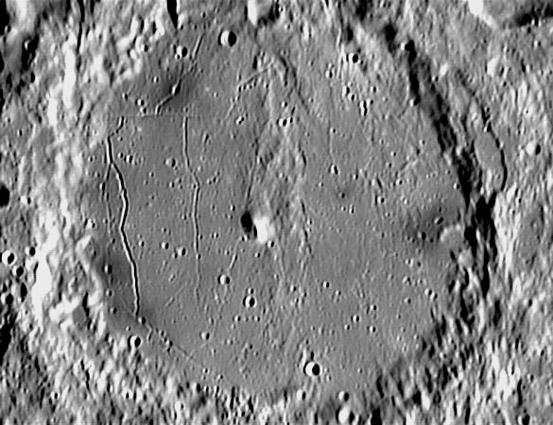May 21, 2004
Volcanic Craters on the Moon
Image Credit: Bruno Daversin |
|
Volcanic Craters on the Moon At one time or another nearly all lunar craters from Copernicus to Messier have been consider volcanic - but virtually all craters can now be convincingly re-interpreted as products of impact cratering. So, are there any volcanic craters on the Moon? Yes, a few, and Bruno Daversin has produced an excellent image of those on the floor of Alphonsus. But first, how do we know they aren't impact craters? (1) They are not circular. (2) They are surrounded by dark halos. (3) They occur along rilles. (1) and (2) can be explained by impact processes, but (3) is unlikely to result from impact. Spectral studies also show that the dark haloes are pyroclastic (ashy) material, not fragmental mare rocks. Considering all of these characteristics together makes volcanism the only reasonable interpretation. In the early 1970s Tom McGetchin and Jim Head compared these craters to terrestrial cinder cones. On Earth, cinder cones, such as Sunset Crater in northern Arizona, are tall and have steep (30 degrees) sides. Head and McGetchin realized that with the Moon's lower gravity and lack of atmosphere, exactly the same eruption on the Moon would produce a broad and low crater very much like these dark halo ones in Alphonsus. Technical Details: Related Links: Tomorrow's LPOD: The L100 |
Author & Editor:
Charles A. Wood
Technical Consultant:
Anthony Ayiomamitis
A service of:
ObservingTheSky.Org
Visit these other PODs:
Astronomy | Mars | Earth
COMMENTS?
Register, and click on the Discussion tab at the top of the page.




